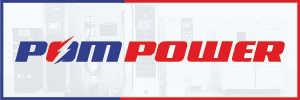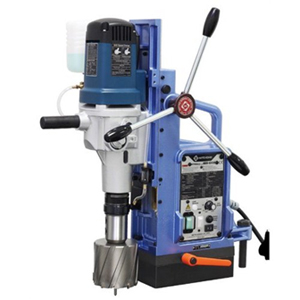Schedule a Call Back
50 Years of EMO: People, Machines, Milestones
 Articles
Articles- Aug 29,25
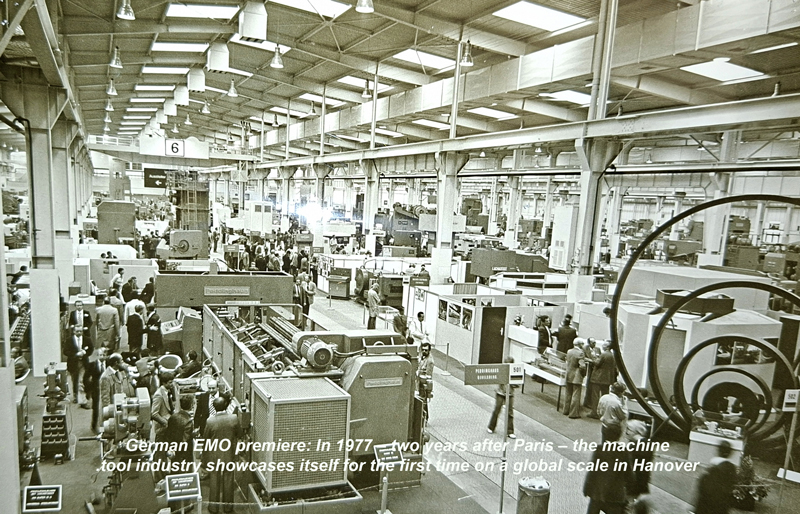
In June 1975, almost all of Paris is dreaming of love – à l'électronique. As the new, electronically controlled RER high-speed train begins its journey, the Centre Pompidou with color-coded pipes and electronic building technology is being built in the middle of the city. At the same time, the international machine tool industry celebrates the premiere of the "Exposition Mondiale de la Machine-Outil" – EMO for short – at the Parc des Expositions de la Porte de Versailles. The common denominator of the three events is that they herald the global dawn of a new era in which electronics are gradually taking over. Let's take a look back.
Farewell, EWA – that's the word in Paris in 1975 and two years later in Hanover. EMO is the successor to the "European Machine Tool Exhibition", which has been held alternately in Belgium, Italy, France and Germany since 1951. The continental industry show will become an international event, to which the European machine tool association Cecimo invites visitors alternately to Milan, Paris and Hanover.
Numerical control: cam disk and camshaft passé
For the first time, the European machine tool industry will be showcasing itself at a trade fair with international appeal throughout. One impulse from the USA in particular caused a stir in the mid-1970s: numerical control (NC). Cam disks, camshafts and mechanical copying devices have been replaced by programmable control systems that allow motion sequences to be flexibly defined via software for the first time. But this is just the beginning, oracles a German trade journal at the time: "The first machine tool world congress concludes with a discussion on the future development of machine tool control in conjunction with the use of computers." But it's not that far yet, punched tape still dominates the scene – the classic storage medium for numerically controlled machines.
I learned about the next step towards CNC – "Computerized Numerical Control" – as a working student in the mid-1970s in Thyssen's large training workshop in Kassel. However, the handling of this technology needs to be learned first: "Hands off, this is not for beginners!" a master craftsman tells the budding electrical engineer as he curiously inspects his first CNC machine: A CNC machine tool over three meters high – equipped with an early Siemens control system. The student looks at a magnetic tape input system that glows amber.
Advance from Japan: Every fourth lathe has a CNC system
No wonder I'm fascinated by the newcomer – after all, CNC is still a technical exception in the mid-1970s. According to the National Bureau of Economic Research, Cambridge (USA), less than five percent of machines in the United States are CNC-controlled, and only around two percent in the Federal Republic of Germany. Only Japan is much further ahead: In 1975, one in four lathes exported already had a CNC system – and the trend is rising sharply.
The production experts look with enthusiasm at computer solutions from the Far East or the USA, but for a long time they are skeptical: I am one of them. During my first visit to EMO in Milan in 1987, as a trade editor I get to know high-tech from the Far East: Mitsubishi presents a CNC system that supposedly works five times faster than conventional 16-bit systems and even optimizes machining automatically thanks to artificial intelligence. For me as an engineer journalist, a new era is beginning, which I refer to in the trade press as "CIMsalabim" – a tongue-in-cheek allusion to "Computer Integrated Manufacturing" (CIM), where robots, machine tools, assembly lines, measuring stations and computers merge to form a computer-integrated factory.
The digital trend will soon be followed by green issues – initially ridiculed, then promoted and finally demanded. High-speed machining (HSC) played a key role. The process enables extremely fast machining with high surface quality – and with very little or no cooling lubricants. At EMO Hanover 2001, Getrag Ford Transmission GmbH demonstrates how HSC and minimum quantity lubrication can be combined to conserve resources. During an on-site report for the EMO press service, I learn: "One glass of Kölsch beer is enough to process 90 gearbox housings" – previously it was 220 liters of emulsion. The VDW also recognizes the potential early on. HSC became a promoted key technology, flanked by eco projects and the Blue Competence initiative. At EMO 2011 at the latest, it becomes clear that energy efficiency is no longer a sideshow.
Industry 4.0: from label to evolution
A few years later, a new guiding principle provides further impetus: Industry 4.0 stands for the idea of networking production systems using powerful computers, sensors and interfaces in such a way that they can be controlled and analyzed in real time – ideally even by cell phone. "A smartphone for production", a developer says in a tongue-in-cheek manner at EMO Hanover in 2017.
However, the first step is to link systems intelligently with one another. Under the guiding theme of "Connecting systems for intelligent production", EMO is sending out a clear signal for digital networking in production technology. In 2019, umati (universal machine technology interface) – the global initiative for open communication interfaces for the mechanical engineering industry and its customers based on OPC UA information models, initiated by the VDW – celebrates its premiere in Hanover. Since then, umati has continued to develop: Today, under the umbrella of VDW and VDMA, the international community guarantees standardized information models for numerous applications, offers a platform for exchanging experiences, creates visibility on the market and enables the practical demonstration of added value. Open interfaces now exist not only for machine tools, but also for components, software solutions and many other manufacturing technologies – a decisive contribution to the smooth cooperation of a wide variety of systems in networked manufacturing.
The year 2020 becomes a test: Within a short space of time, virtual communication becomes established – a replacement for coronavirus-related contact restrictions. Companies are switching to remote maintenance, digital customer formats and flexible logistics. Further adjustments follow in 2022 with the loss of Russian gas supplies – from energy efficiency to the realignment of global supply chains. Industry 4.0 is becoming a living practice. Virtual services such as remote maintenance, remote diagnostics and online training are replacing on-site deployment in many places. Digital tools support customer contact, while cloud-based platforms enable training and support regardless of time and place.
Efficient communication despite coronavirus contact restrictions
Contactless communication works efficiently, I observe while researching for a text: "Digitalization shows its strength above all in combination with online communication. We are talking about troubleshooting, teleservice and remote diagnostics, the flexibility of which many companies have come to appreciate in times of crisis." The pandemic is therefore becoming a catalyst for digitalization – in service and in interaction. This experience still shapes our service structures today. Some people wonder whether physical trade fairs are still necessary at all – after all, virtual communication works surprisingly well these days.
Virtual communication is here to stay – but the next technological leap is already in the pipeline. Shortly after the digitalization push caused by the pandemic, an old acquaintance is back in the spotlight: artificial intelligence. While Asia and America are already investing, Professor Jörg Krüger from the Fraunhofer Institute for Production Systems and Design Technology IPK, Berlin, warns: "Without AI, soon a knockout (KO)" – and advises linking the domain knowledge of workers with neural networks. Data is the "digital gold dust" of production, from which new business models can emerge. This claim will become tangible at EMO 2023: Trumpf presents an AI assistance system for the automatic sorting of sheet metal parts, J.G. Weisser shows predictive maintenance based on learning algorithms. Mapal, Ceratizit and the Fraunhofer IPT also demonstrate how AI optimizes manufacturing processes, reduces testing times and makes machines more intelligent. AI is on its way from buzzword to standard – visible at more and more stands at EMO.
And yet EMO 2023 in particular showed that networking does not replace personal exchange, but enriches it. Under the claim "Innovate Manufacturing.", the VDW attracted over 90,000 experts from all over the world to Hanover – around half of them from abroad. The trade fair impressively demonstrated that digitalization promotes dialog. In Hanover, I have come full circle, having stood at my first CNC machine 50 years ago as a curious student worker – and now reviewing half a century of EMO experience as a technology reporter. My exciting question: What happens next?
My research shows that EMO 2025 will once again focus on digitalization, automation and sustainability – complemented by new AI applications. Together with Siemens, DMG MORI is showcasing an end-to-end digital twin. Sandvik Coromant launches smart tool holders with real-time monitoring. Supfina presents a new machine concept for surface finishing, and VibroCut introduces ultrasonic support for machining. At the same time, MAPAL reminds us that classic tool solutions still have their place. VDW Chairman Franz-Xaver Bernhard puts it in a nutshell: "The future of production is created where innovation meets experience – and that is precisely the strength of EMO."
About the author:
Nikolaus Fecht is a technology journalist based in Gelsenkirchen (Germany).
Article Courtesy: EMO Hannover 2025
Under the motto Innovate Manufacturing, EMO will showcase the entire metalworking value chain from September 22 to 26, 2025. EMO takes place in a sequence of "Hanover – Milan" every two years and will celebrate its 50th anniversary in 2025.
Related Stories
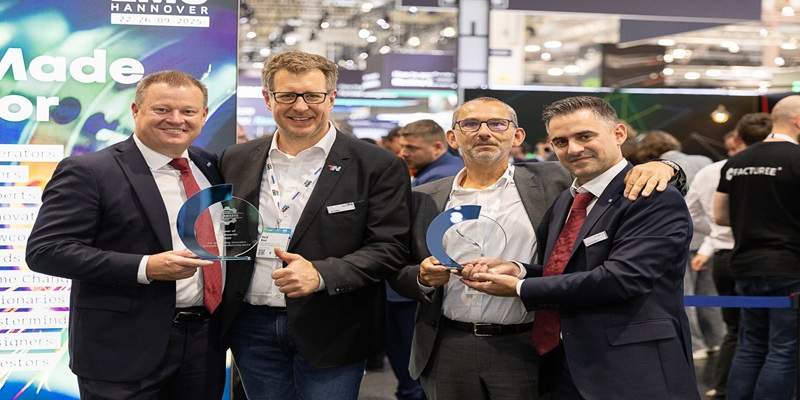
UNITED GRINDING and CHARMILLES Honoured at EMO Hannover 2025
At EMO 2025, UNITED GRINDING completed its digital ecosystem by integrating the open, manufacturer-independent customer portal from Transaction-Network.
Read more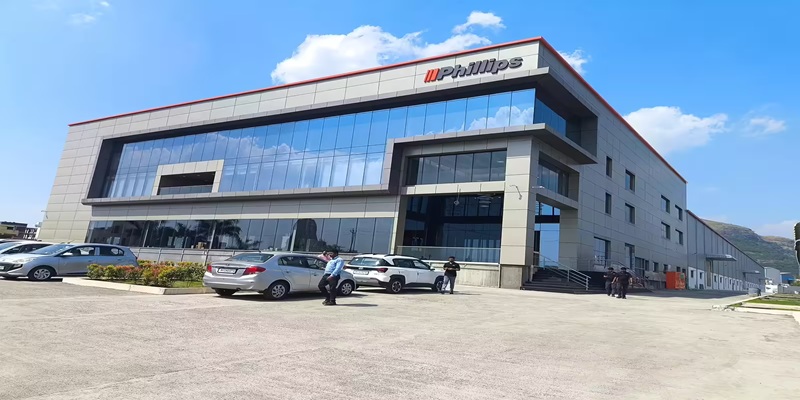
Phillips Opens Expertise Centre in Pune to Boost Manufacturing Innovation
New Chakan facility to promote advanced, smart and sustainable manufacturing
Read more
Seco redefines tool management with reconditioning and digital traceability
In addition to remanufacturing services, Seco operates a recycling program for carbide tools. When tools are too worn for remanufacturing, they are responsibly recycled into new products.
Read moreRelated Products

Precision Cutting Tools1
S S Trading Corporation offers a wide range of precision
cutting tools.
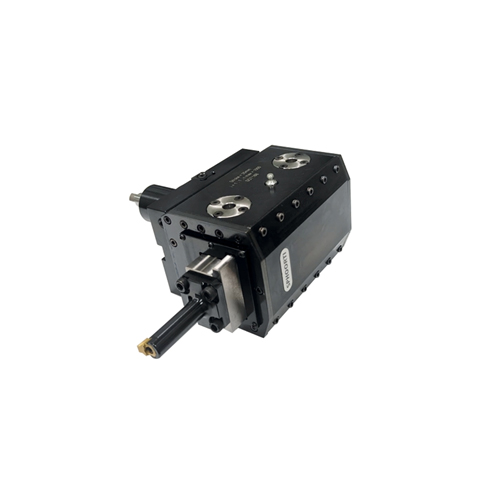
Slotting Head Unit for All Cnc Turn Mill Centers
Sphoorti Machine Tools Pvt Ltd offers a wide range of
slotting head unit for all CNC turn mill centers.

Slotted Tool Disc and Tool Holders
Prominent Machine Tools offers a wide range of slotted tool disc and tool holders.



